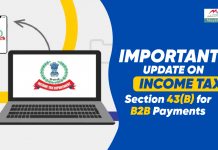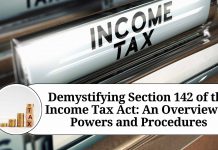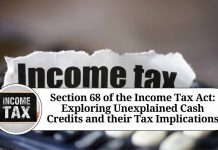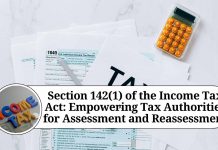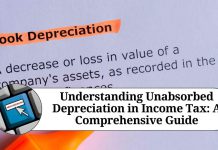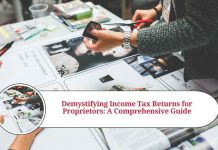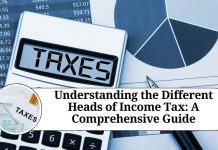Section 144B of the Income Tax Act is a relatively new provision that was introduced in 2021 to bring in more transparency and accountability in the assessment process. This section empowers the taxpayer to approach the Dispute Resolution Panel (DRP) in case of a disagreement with the assessment order passed by the assessing officer. In this blog, we will discuss the salient features of Section 144B and its implications for taxpayers.
Introduction to Section 144B
Section 144B was introduced by the Finance Act, 2021 and came into effect from 1st April 2021. The main objective behind introducing this section was to ensure that the assessment process is transparent, efficient and fair. Section 144B empowers the taxpayer to approach the DRP in case of any dispute with the assessment order passed by the assessing officer.
Salient Features of Section 144B
- Applicability: Section 144B is applicable to all assessments carried out under Section 143(3) of the Income Tax Act, which pertains to scrutiny assessments.
- Dispute Resolution Panel (DRP): Section 144B empowers the taxpayer to approach the DRP in case of a disagreement with the assessment order passed by the assessing officer. The DRP is a panel of three senior income tax officers who are appointed by the Central Board of Direct Taxes (CBDT). The DRP is responsible for reviewing the draft assessment order passed by the assessing officer and providing its recommendations to the assessing officer.
- Time Limit for DRP Proceedings: The DRP is required to provide its recommendations within 9 months from the end of the month in which the draft assessment order is served on the taxpayer.
- Mandatory Pre-Show Cause Notice: Before passing the draft assessment order, the assessing officer is required to issue a mandatory pre-show cause notice to the taxpayer. This notice must specify the proposed additions or disallowances that the assessing officer intends to make in the assessment order.
- Opportunity to Respond: The taxpayer is provided with an opportunity to respond to the pre-show cause notice issued by the assessing officer. The response must be filed within 30 days from the date of receipt of the notice.
- Provision for Oral Hearing: The DRP is required to provide an opportunity for an oral hearing to the taxpayer, if requested. This hearing must be conducted within 15 days from the date of request.
Other Useful Blogs:
Implications of Section 144B for Taxpayers
Increased Transparency: Section 144B has brought in more transparency in the assessment process. The pre-show cause notice issued by the assessing officer and the recommendations provided by the DRP have to be provided in writing, which helps the taxpayer to understand the reasons for the proposed additions or disallowances.
Faster Resolution of Disputes: The DRP is required to provide its recommendations within 9 months from the end of the month in which the draft assessment order is served on the taxpayer. This has helped in faster resolution of disputes, which was not possible earlier.
Opportunity to Respond: The provision for pre-show cause notice and an opportunity to respond has provided the taxpayer with a chance to present his/her case and provide relevant information to the assessing officer.
Section 144B of the Income Tax Act has been introduced with the objective of ensuring that the assessment process is transparent, efficient and fair. This provision has been widely welcomed by taxpayers as it provides them with an opportunity to present their case in front of the DRP and get their grievances addressed. Let us now delve deeper into some of the key features of Section 144B and its implications for taxpayers.
Pre-Show Cause Notice
One of the most important features of Section 144B is the provision for a mandatory pre-show cause notice to be issued by the assessing officer. This notice must specify the proposed additions or disallowances that the assessing officer intends to make in the assessment order. This notice provides the taxpayer with a clear understanding of the grounds on which the assessment order has been passed, and enables him/her to present their case accordingly.
Opportunity to Respond
The provision for a pre-show cause notice also provides the taxpayer with an opportunity to respond to the proposed additions or disallowances. The response must be filed within 30 days from the date of receipt of the notice. This provision enables the taxpayer to present their case and provide relevant information to the assessing officer. This ensures that the assessment order is passed after due consideration of all the relevant facts.
Dispute Resolution Panel
The introduction of the DRP is another important feature of Section 144B. The DRP is a panel of three senior income tax officers who are appointed by the CBDT. The DRP is responsible for reviewing the draft assessment order passed by the assessing officer and providing its recommendations to the assessing officer. The recommendations provided by the DRP are binding on the assessing officer, and the assessment order must be passed in accordance with these recommendations.
Provision for Oral Hearing
The provision for an oral hearing is another important feature of Section 144B. The DRP is required to provide an opportunity for an oral hearing to the taxpayer, if requested. This hearing must be conducted within 15 days from the date of request. This provision enables the taxpayer to present their case in person and provide additional information to the DRP.
Conclusion
Section 144B of the Income Tax Act has brought in more transparency and accountability in the assessment process. It has empowered the taxpayer to approach the DRP in case of a disagreement with the assessment order passed by the assessing officer. The provision for pre-show cause notice and an opportunity to respond has provided the taxpayer with a chance to present his/her case and provide relevant information to the assessing officer. Overall, Section 144B has been a welcome addition to the Income Tax Act and has helped in resolving disputes faster and in a more efficient manner.
Read more useful content:
Frequently Asked Questions (FAQs)
What is Section 144B of the Income Tax Act?
Section 144B is a provision introduced in the Income Tax Act, which provides taxpayers with an opportunity to dispute the assessment order passed by the assessing officer.
2. Who can avail the benefits of Section 144B?
Any taxpayer who has received a show cause notice from the assessing officer can avail the benefits of Section 144B.
3. What is the purpose of the pre-show cause notice under Section 144B?
The pre-show cause notice is intended to inform the taxpayer of the proposed additions or disallowances that the assessing officer intends to make in the assessment order.
4. What is the time limit for responding to the pre-show cause notice?
The taxpayer must respond to the pre-show cause notice within 30 days from the date of receipt of the notice.
5. What is the Dispute Resolution Panel (DRP)?
The DRP is a panel of three senior income tax officers appointed by the Central Board of Direct Taxes (CBDT), which is responsible for reviewing the draft assessment order passed by the assessing officer.
6. What is the time limit for the DRP to provide its recommendations?
The DRP must provide its recommendations to the assessing officer within 45 days from the date of reference.
7. Are the recommendations of the DRP binding on the assessing officer?
Yes, the recommendations of the DRP are binding on the assessing officer, and the assessment order must be passed in accordance with these recommendations.
8. Can the taxpayer request for an oral hearing before the DRP?
Yes, the taxpayer can request for an oral hearing before the DRP, and the hearing must be conducted within 15 days from the date of request.
9. What happens if the taxpayer is not satisfied with the order passed by the DRP?
If the taxpayer is not satisfied with the order passed by the DRP, he/she can appeal to the Income Tax Appellate Tribunal (ITAT).
10. Has Section 144B reduced litigation and provided clarity to taxpayers?
Yes, Section 144B has reduced litigation and provided clarity to taxpayers by providing them with an alternative mechanism to dispute the assessment order, which is faster, cost-effective and more efficient.












